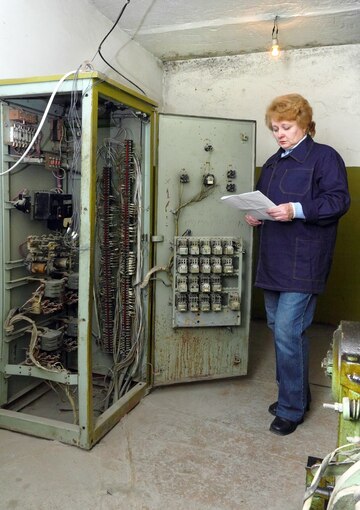The Value of Regular Maintenance to Protect the Efficiency of Elevators
In the world of upright transport, elevators play a critical role in making certain smooth movement within different facilities. The operational effectiveness of lifts is contingent upon thorough upkeep protocols that often go unnoticed however are indispensable for their correct functioning. Regular upkeep not only ensures the smooth procedure of elevators but additionally functions as a proactive step to avert potential malfunctions that could hamper their performance. Nevertheless, truth value of sticking to suggested upkeep routines expands beyond simple operational efficiency.
Value of Elevator Maintenance
Elevator upkeep is an important method for making sure the safety and security and dependable procedure of upright transportation systems. Routine maintenance not just prolongs the life-span of lifts but likewise decreases the risk of unforeseen breakdowns that can trouble structure passengers and visitors. By sticking to an arranged maintenance strategy, structure proprietors and center managers can detect and address potential concerns prior to they escalate into significant problems, therefore lessening costly fixings and downtime.
Furthermore, elevator maintenance plays an important function in promoting conformity with security guidelines and standards. Regular inspections and servicing aid to identify and correct any security dangers quickly, ensuring that the elevator runs within specified safety specifications. This proactive approach not just shields the health of travelers but also shields the structure proprietor from legal obligations in case of injuries or mishaps.

Cost-Efficiency of Normal Maintenance
Making sure regular maintenance of upright transportation systems can result in considerable cost savings and operational efficiencies for building proprietors and facility supervisors. By spending in regular upkeep for elevators, possible concerns can be recognized and addressed without delay, avoiding more substantial and pricey repair services in the future. Regular servicing helps to extend the life-span of elevator parts, decreasing the requirement for early substitutes that could stress the spending plan.
In addition, properly maintained lifts are more energy-efficient, as smoothly running systems take in less power. This translates into reduced energy costs for the structure owner over time - lift maintenance. Efficient lifts additionally add to boosted renter contentment and retention, as citizens benefit from trustworthy upright transportation that runs seamlessly. The improved operational performance of about his well-serviced lifts can also boost the total value of the home.
Safety Actions and Inspections
To maintain the cost-efficiency and operational effectiveness attained via normal maintenance of upright transportation systems, comprehensive safety and security actions and assessments are necessary components of an elevator upkeep program. Safety steps include a variety of methods designed to avoid crashes, minimize risks, and make sure the well-being of elevator customers.
Along with regular inspections, elevator maintenance programs should consist of periodic safety tests to confirm the correct functioning of crucial safety attributes, such as emergency brakes, overspeed governors, and door sensing units. These tests aid make sure that the lift system satisfies industry security criteria and guidelines. By prioritizing safety steps and examinations, building owners and center supervisors can improve the integrity of their upright transport systems and provide a safe atmosphere for owners and visitors.
Enhancing Lift Efficiency
By carrying out proactive maintenance strategies, facilities can maximize elevator performance and lessen downtime. Enhancing lift efficiency includes a mix of normal upkeep, innovation efforts, and technological advancements. Normal maintenance tasks such as lubricating moving parts, adjusting door systems, and examining electric parts can significantly boost the efficiency and life expectancy of elevators. Furthermore, innovation jobs can update older systems with new innovations, enhancing energy performance and adventure convenience.
Technical here advancements, such as destination dispatch systems and anticipating maintenance devices, can likewise improve elevator efficiency by enhancing website traffic circulation and detecting prospective issues before they trigger downtime. These advancements not just boost the total efficiency of elevators however likewise enhance traveler experience by reducing wait times and offering a smoother trip.

Guaranteeing User Contentment
Building upon the foundation of improved lift efficiency with regular maintenance and innovation efforts, the focus now shifts towards enhancing individual complete satisfaction within the lift experience. One critical aspect is the dependability of the lift system, where individuals expect minimal downtime and efficient operation.

Final Thought
In verdict, normal upkeep of elevators plays a crucial role in ensuring their article source performance, security, and efficiency. Regular maintenance is an important technique to protect the effective operation of elevators in both business and property structures.
Elevator maintenance is an essential practice for guaranteeing the safety and reputable procedure of vertical transport systems.To maintain the cost-efficiency and functional effectiveness achieved via regular servicing of vertical transport systems, thorough safety and security measures and assessments are important elements of a lift upkeep program (lift and engineering services).In enhancement to routine inspections, lift maintenance programs ought to consist of regular safety and security tests to verify the appropriate functioning of critical security features, such as emergency brakes, overspeed governors, and door sensing units.Structure upon the structure of improved elevator efficiency via regular maintenance and modernization initiatives, the focus now shifts in the direction of optimizing individual satisfaction within the elevator experience.In verdict, routine maintenance of elevators plays an important duty in guaranteeing their performance, security, and performance